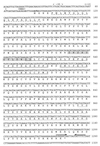Characterization of a predominant immunogenic outer membrane protein of Riemerella anatipestifer
- PMID: 10702488
- PMCID: PMC95844
- DOI: 10.1128/CDLI.7.2.168-174.2000
Characterization of a predominant immunogenic outer membrane protein of Riemerella anatipestifer
Abstract
The ompA gene, encoding the 42-kDa major antigenic outer membrane protein OmpA of Riemerella anatipestifer, the etiololgical agent of septicemia anserum exsudativa, was cloned and expressed in Escherichia coli. Recombinant OmpA displayed a molecular mass similar to that predicted from the nucleotide sequence of the ompA gene but lower than that observed in total cell lysates of R. anatipestifer. The ompA gene showed a conserved C-terminal region comprising the OmpA-like domain and a variable N-terminal region. This structure is similar to those of the analogous outer membrane proteins of several gram-negative bacteria. However, OmpA of R. anatipestifer contains six EF-hand calcium-binding domains and two PEST regions, which distinguish it from other outer membrane proteins. The occurrence of these motifs in OmpA suggests a possible role in virulence for this protein. The ompA gene is present in the R. anatipestifer type strain and in all serotype reference strains. However, it exhibits some minor genetic heterogeneity among different serotypes, which seems not to affect the strong antigenic characteristics of the protein. OmpA is a conserved and strong antigenic determinant of R. anatipestifer and hence is suggested to be a valuable protein for the serodetection of R. anatipestifer infections, independent of their serotype.
Figures




Similar articles
-
Vaccination of ducks with recombinant outer membrane protein (OmpA) and a 41 kDa partial protein (P45N') of Riemerella anatipestifer.Vet Microbiol. 2002 Jan 23;84(3):219-30. doi: 10.1016/s0378-1135(01)00456-4. Vet Microbiol. 2002. PMID: 11731174
-
Evaluation of the protective immunity of Riemerella anatipestifer OmpA.Appl Microbiol Biotechnol. 2020 Feb;104(3):1273-1281. doi: 10.1007/s00253-019-10294-3. Epub 2019 Dec 21. Appl Microbiol Biotechnol. 2020. PMID: 31865436
-
A recombinant vaccine of Riemerella anatipestifer OmpA fused with duck IgY Fc and Schisandra chinensis polysaccharide adjuvant enhance protective immune response.Microb Pathog. 2019 Nov;136:103707. doi: 10.1016/j.micpath.2019.103707. Epub 2019 Sep 3. Microb Pathog. 2019. PMID: 31491549
-
Outer membrane protein A and OprF: versatile roles in Gram-negative bacterial infections.FEBS J. 2012 Mar;279(6):919-31. doi: 10.1111/j.1742-4658.2012.08482.x. Epub 2012 Feb 10. FEBS J. 2012. PMID: 22240162 Free PMC article. Review.
-
Structure and Functions of Bacterial Outer Membrane Protein A, A Potential Therapeutic Target for Bacterial Infection.Curr Top Med Chem. 2021;21(13):1129-1138. doi: 10.2174/1568026621666210705164319. Curr Top Med Chem. 2021. PMID: 34225622 Review.
Cited by
-
Investigation of TbfA in Riemerella anatipestifer using plasmid-based methods for gene over-expression and knockdown.Sci Rep. 2016 Nov 15;6:37159. doi: 10.1038/srep37159. Sci Rep. 2016. PMID: 27845444 Free PMC article.
-
Immune-iron homeostasis deciphers resistance divergence to Riemerella anatipestifer in ducks.Front Microbiol. 2025 Jul 11;16:1627631. doi: 10.3389/fmicb.2025.1627631. eCollection 2025. Front Microbiol. 2025. PMID: 40718811 Free PMC article.
-
Whole-Genome Sequence Analysis and Genome-Wide Virulence Gene Identification of Riemerella anatipestifer Strain Yb2.Appl Environ Microbiol. 2015 Aug;81(15):5093-102. doi: 10.1128/AEM.00828-15. Epub 2015 May 22. Appl Environ Microbiol. 2015. PMID: 26002892 Free PMC article.
-
The Riemerella anatipestifer AS87_01735 Gene Encodes Nicotinamidase PncA, an Important Virulence Factor.Appl Environ Microbiol. 2016 Sep 16;82(19):5815-23. doi: 10.1128/AEM.01829-16. Print 2016 Oct 1. Appl Environ Microbiol. 2016. PMID: 27451449 Free PMC article.
-
Resistance of Capnocytophaga canimorsus to killing by human complement and polymorphonuclear leukocytes.Infect Immun. 2009 Jun;77(6):2262-71. doi: 10.1128/IAI.01324-08. Epub 2009 Mar 23. Infect Immun. 2009. PMID: 19307219 Free PMC article.
References
-
- Altschul S F, Gish W, Miller W, Myers E W, Lipman D J. Basic local alignment search tool. J Mol Biol. 1990;215:403–410. - PubMed
-
- Asplin F D. A septicaemic disease of ducklings. Vet Rec. 1955;67:854–858.
-
- Ausubel F M, Brent R, Kingston R E, Moore D D, Seidman J G, Smith J A, Struhl K. Current protocols in molecular biology. New York, N.Y: John Wiley & Sons, Inc.; 1999.
-
- Bangun A, Tripathy D N, Hanson L E. Studies of Pasteurella anatipestifer: an approach to its classification. Avian Dis. 1981;25:326–337. - PubMed
Publication types
MeSH terms
Substances
Associated data
- Actions
- Actions
LinkOut - more resources
Full Text Sources

